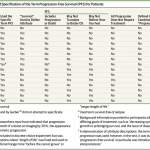In the field of psychiatry, the impact of sex is significant. Research has shown that in schizophrenia, women often receive a delayed diagnosis compared to men, leading to less effective medication options. Similarly, certain medications may have different side effects on men and women, affecting women more negatively. In the case of depression, women have a higher prevalence than men and tend to experience anxiety and somatic comorbidities. Surprisingly, despite these differences, men are more likely to die by suicide. Understanding the neurobiology of sex differences in psychiatry is crucial for improving diagnostic precision and treatment outcomes.
A recent study has made significant strides in examining disparities in brain connectivity between males and females. This research sheds light on the fundamental ways in which brain network patterns differ between sexes, exploring the link between brain networks and behavioral variances in males and females. Notably, while previous studies have explored this area, few reliable sex/gender differences have been identified, with many findings primarily related to variations in brain size.
The study focused on analyzing how individual differences in functional brain connectivity can predict the presence of psychiatric illness and associated behaviors. By investigating the differences in functional network connectivity across sexes, the researchers utilized predictive modeling approaches to assess shared or unique functional connectivity correlates associated with psychiatric behaviors in males and females. The study, based on data from the Adolescent Brain Cognitive Development Study, engaged a sample of 5,260 children aged 9 and 10, including 2,571 females. Behavioral data was evaluated using the Child Behavior Checklist, which comprises empirically-based syndrome scales related to various behaviors.
Results indicated overlapping behavioral distributions between males and females, with significant sex differences noted in specific syndrome scales. Brain-based predictive models successfully predicted psychiatric illness-linked behaviors in both sexes, with more accurate predictions for externalizing behaviors compared to internalizing ones. Shared neurobiological features were found to underlie the expression of behaviors in both sexes, despite differences in behavior presentation.
Furthermore, the study discussed the challenges in isolating disorder-specific biomarkers due to overlapping psychiatric conditions and high comorbidity rates. However, the research suggests that while psychiatric illnesses manifest differently in males and females, there are shared neurobiological features that contribute to these conditions. This valuable insight could pave the way for more tailored and effective treatments and diagnostics that consider the intricate nature of sex differences in psychiatric presentations.
Strengths of the study include its large sample size and the critical topic of sex differences in psychiatry, offering important insights into personalized mental health care. However, limitations include a lack of detailed information on model development, potential issues related to motion artifacts, and the absence of robust site correction methods. Addressing these limitations could enhance the validity and reliability of the study’s findings, ultimately advancing our understanding of sex differences in psychiatry.






